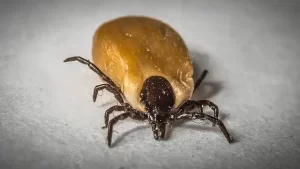Women with these 3 gene mutations should screen for breast cancer from the age of 30
- Engineered Soybeans with Pig Protein: A Promising Alternative or Pandora’s Dish?
- Severe Fever with Thrombocytopenia Syndrome (SFTS): A Tick-Borne Threat with High Mortality
- Why Isolating Bananas Extends Their Shelf Life?
- This common vitamin benefits the brain and prevents cognitive decline
- New report reveals Nestlé adding sugar to infant formula sold in poor countries
- Did Cloud Seeding Unleash a Deluge in Dubai?
Women with these 3 gene mutations should screen for breast cancer from the age of 30
- Red Yeast Rice Scare Grips Japan: Over 114 Hospitalized and 5 Deaths
- Long COVID Brain Fog: Blood-Brain Barrier Damage and Persistent Inflammation
- FDA has mandated a top-level black box warning for all marketed CAR-T therapies
- Can people with high blood pressure eat peanuts?
- What is the difference between dopamine and dobutamine?
- How long can the patient live after heart stent surgery?
Women with these 3 gene mutations should screen for breast cancer from the age of 30.
“JAMA · Oncology”: Women with these three gene mutations, screening for breast cancer from the age of 30 can significantly reduce the risk of death!
Despite the increasing number of breast cancer treatments in recent years, the mortality rate has not decreased significantly. Therefore, specific screening of high-risk groups remains the focus of breast cancer prevention and treatment.
Since the relationship between BRCA gene and breast cancer was determined, breast cancer susceptibility gene detection has become an important part of cancer prevention.
For women with BRCA gene mutations, the National Comprehensive Cancer Network (NCCN) guidelines recommend annual MRI screening starting at age 25 [2]. However, there are currently no specific screening recommendations for other breast cancer pathogenic variants.
Recently, researchers from the University of Washington-Seattle Cancer Care Alliance published an important study in JAMA Oncology . The study found that for women with pathogenic mutations in ATM, CHEK2, and PALB2, annual MRI examinations starting at age 30-35 and annual mammography after age 40 can reduce breast cancer mortality by 50%. % or more [3].

Screenshot of article homepage
In recent years, many non-BRCA gene pathogenic variants (PVs) have been confirmed to be associated with breast cancer, the most common of which are ATM, CHEK2 and PALB2. These pathogenic variants can increase the risk of breast cancer by at least 2 times [4].
With the promotion of genetic testing technology, more and more women find themselves carriers of these intermediate and high-risk PVs. But for these women, the best way to screen for breast cancer has yet to be determined. The NCCN guidelines can only make recommendations by referring to screening decisions in BRCA mutation carriers [2].
CISNET (Cancer Intervention and Surveillance Modeling Network) is a consortium of researchers sponsored by the National Cancer Society (NCI), they use simulation modeling to study the impact of various interventions on morbidity and mortality in the process of cancer prevention, diagnosis and treatment, CISNET The model has been used in the strategy development of multiple cancer screening guidelines in the United States [5].

CISNET official website
In order to evaluate the pros and cons of breast cancer screening strategies at different starting ages, the team used the E-type model from Erasmus Medical Center in the Netherlands and the WH-type model from the University of Wisconsin-Madison and Harvard Medical School in CISNET for simulation calculations.
The two models are based on an age-cycle cohort prototype that simulates the long-term survival of individual women included in the study without screening and treatment, and the incidence of breast cancer in the United States over that time period.
The researchers included women born in 1985 with mutations in ATM, CHEK2, and PALB2, and performed lifetime simulations starting at age 25. The parameters entered in the model are shown in the figure below.

Model input parameter information table
The breast cancer incidence and subtype parameters for each mutation were obtained from the pooled data of 32,247 cases and 32,544 controls from 12 population-based studies provided by the Cancer Risk Estimation (CARRIERS) Consortium.
Mammography and MRI screening data were obtained from published data from the Ontario High-Risk Breast Cancer Screening (OBSP) Program, adjusted for mammography sensitivity by age.
All breast cancer patients were assumed to receive guideline-recommended specific therapy, treatment efficacy was based on individual clinical trial data, and non-breast cancer mortality was based on age/birth cohort-specific all-cause mortality settings.
The researchers then evaluated 5 main screening strategies for each mutation: ① annual mammograms starting at age 40; ② annual MRI starting at age 25 and again annually starting at age 40 mammogram; ③ annual MRI from age 30 , and annual mammogram from age 40 ; 4 MRI annually from age 35 , and again annually from age 40 One mammogram; ⑤ MRI and mammogram every year from the age of 40.
Key outcomes of the model analysis included estimated lifetime breast cancer mortality reductions, life years gained, breast cancer deaths avoided, number of false-positive screenings per 1,000 women screened, and number of benign biopsies.
The results of modeling analysis showed that the lifetime breast cancer risks of ATM, CHEK2, and PALB2 mutation carriers were 20.9% (18.1%-23.7%), 27.6% (23.4%-31.7%), and 39.5% (35.6%-43.3%), respectively. ).
Routine mammography screening starting at age 40 was associated with a 36.4%-38.5% reduction in breast cancer mortality compared with no screening .
Yearly MRI screening starting at age 25 and annual mammography after age 40 reduces breast cancer mortality by 55.7-60.2%, but predicts 5592-5932 false positives per 1000 women Examination and 1637-1725 benign biopsies .
If annual MRI screening starts at age 30, combined with annual mammography after age 40 can reduce breast cancer mortality by 55.4-59.5% ,But per 1,000 women, 5,075-5,415 false-positive tests and 1,439-1,528 benign biopsies were expected .
Yearly MRI screening starting at age 35 and annual mammography after age 40 can reduce breast cancer mortality by 54.4%-57.6%, but are expected to occur 4661-5001 per 1000 women False positive tests and 1280-1368 benign biopsies.
Yearly MRI and mammography from the age of 40 can reduce breast cancer mortality by 52.3%-53.6%.

Breast cancer mortality reduction, life years gained, and breast cancer deaths avoided under different screening strategies
From the above data, among the above five screening strategies, women who started screening at the age of 25 had the largest reduction in breast cancer mortality, but also had the largest number of false positives and benign biopsies.
In addition, to explore whether early mammography would benefit women with pathogenic mutations in ATM, CHEK2, and PALB2, the researchers also analyzed the effect of mammography on breast cancer mortality before age 40.
It was found that adding mammography before age 40 on the basis of MRI screening at age 30 did not reduce breast cancer mortality further (0.1%-0.3%) , and was expected to increase by 649 per 1000 women. – 650 false positive tests and 58-59 benign biopsies.
Combined with the results of the above modeling analysis, the researchers believe that for women with ATM, CHEK2, and PALB2 pathogenic mutations, the current optimal screening strategy should be MRI examinations every year starting at the age of 30-35, and then every year starting at the age of 40. A single mammogram can reduce breast cancer deaths by more than 50% and reduce the number of false-positive tests compared to starting screening at age 25.
This study provides strong evidence-based medical evidence for screening strategies for carriers of pathogenic mutations in intermediate and high-risk breast cancer. It is believed that in the future, the results of this study can further improve breast cancer screening guidelines and allow more breast cancer patients Realize benefits.
References:
1. Rongshou Zheng, Siwei Zhang, Hongmei Zeng, et al. Cancer incidence and mortality in China, 2016, Journal of the National Cancer Center, 2022. doi: 10.1016/j.jncc.2022.02.002.
2. National Comprehensive Cancer Network. NCCN clinical practice guidelines in oncology: genetic/familial high-risk assessment: breast, ovarian, and pancreatic. Version 1.2022-August 11, 2021. Accessed November 17, 2021.
https://www.nccn.org/professionals/physician_gls/pdf/genetics_bop.pdf
3. Lowry KP, Geuzinge HA, Stout NK, et al. Breast Cancer Screening Strategies for Women With ATM, CHEK2, and PALB2 Pathogenic Variants: A Comparative Modeling Analysis [published online ahead of print, 2022 Feb 17]. JAMA Oncol. 2022 ;e216204.doi:10.1001/jamaoncol.2021.6204.
4. Hu C, Hart SN, Gnanaolivu R, et al. A population-based study of genes previously implicated in breast cancer. N Engl J Med. 2021;384(5):440-451. doi:10.1056/NEJMoa2005936.
5. Mandelblatt JS, Stout NK, Schechter CB, et al. Collaborative modeling of the benefits and harms associated with different US breast cancer screening strategies. Ann Intern Med. 2016;164(4):215-225. doi:10.7326/M15 -1536.
Women with these 3 gene mutations should screen for breast cancer from the age of 30
(source:internet, reference only)
Disclaimer of medicaltrend.org
Important Note: The information provided is for informational purposes only and should not be considered as medical advice.



